What Materials Can Be Laser Cut? A Complete Guide for Industrial Buyers
Laser cutting has revolutionised the way modern industries fabricate parts, offering unmatched precision, speed, and versatility. Whether you’re in automotive, aerospace, construction, or manufacturing, understanding what materials can be laser cut and how to select the right one for your needs is essential.
This guide breaks down the materials compatible with laser cutting, the pros and cons of each, and key considerations for industrial buyers.
Why Material Selection Matters in Laser Cutting
Laser cutting is not a one-size-fits-all solution. The material you choose impacts everything from edge quality and cut speed to cost and post-processing requirements.
Different materials absorb laser energy differently, and each has its own thermal, reflective, and structural properties. Choosing the right material ensures high-precision cuts, minimal warping, and reduced waste, all of which matter deeply in mass production and tight-tolerance applications.
Check out our detailed guide on laser cutting and its applications.

Common Materials Used in Laser Cutting
Let’s explore the main categories of materials compatible with laser cutting:
Metals
Metals are among the most commonly laser-cut materials in industrial settings. With the right laser source (typically fibre lasers for metals), the following options are ideal:
Mild Steel
- Thickness Range: Up to 25mm
- Benefits: Affordable, strong, and easy to cut
- Applications: Structural components, brackets, and general fabrication
Mild steel is excellent for general-purpose manufacturing and offers clean cuts with CO₂ or fibre lasers.
Stainless Steel
- Thickness Range: Up to 15mm
- Benefits: Corrosion-resistant, aesthetically appealing
- Applications: Medical devices, food processing equipment, exterior panels
Stainless steel requires high-precision cutting to avoid discolouration or warping, especially in cosmetic-grade parts.
Aluminium
- Thickness Range: Up to 10mm
- Benefits: Lightweight, corrosion-resistant
- Challenges: Reflective surface can deflect laser beams; requires high-power fibre lasers
- Applications: Aerospace parts, electronics casings, automotive panels
Copper and Brass
- Benefits: Excellent thermal and electrical conductivity
- Challenges: High reflectivity makes them tricky to cut
- Applications: Electrical components, custom enclosures
Reflective materials like copper often need specialised settings and expertise to laser cut effectively.
Need help cutting aluminium, steel, or copper components? Kirmell provides professional laser cutting services tailored to industrial-grade metalwork.
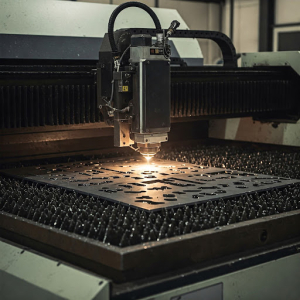
Plastics
Laser cutting is widely used in prototyping, signage, and product design using various plastic materials. However, not all plastics are safe or effective for laser cutting.
Acrylic (PMMA)
- Benefits: Produces polished edges, cuts cleanly
- Applications: Display panels, signage, lighting enclosures
- Note: Choose cast acrylic for the smoothest edge finishes
Polycarbonate
- Challenges: Doesn’t cut well with CO₂ lasers; tends to discolour and char
- Applications: Should be avoided or tested thoroughly before use
Delrin (Acetal)
- Benefits: Cuts well in thin sheets
- Applications: Gears, fixtures, mechanical components
- Note: May emit hazardous fumes. Ventilation is essential
PETG, ABS, and Nylon
- PETG: Cuts clean but may bubble
- ABS: Not recommended, produces toxic fumes and poor-quality cuts
- Nylon: Melts and discolours easily
Always check with your fabricator to ensure plastics are laser-safe and that proper extraction systems are in place.
Woods and Plywoods
Laser cutting works very well with wood-based materials, especially for signage, art, packaging, and low-volume fabrication.
Plywood
- Benefits: Inexpensive, readily available
- Applications: Packaging inserts, lightweight panels
- Note: Use laser-compatible plywood avoid glues that emit toxic fumes
MDF (Medium-Density Fiberboard)
- Challenges: Can char or burn easily
- Applications: Decorative panels, display stands
Solid Wood (Maple, Birch, etc.)
- Benefits: Aesthetic finish, easy to engrave
- Challenges: Thickness and moisture content can affect results
Ensure wood has minimal resin content and is flat for best results.
Composites and Laminates
Composite materials can be tricky to laser cut due to layered structures, adhesives, and resins. Common examples include:
- Carbon Fiber (non-resin): Can be laser cut but may emit toxic particles
- Laminates (such as Formica): May burn or release fumes; often require controlled settings
Only attempt to laser cut composites if your provider has experience and proper safety equipment.
Paper, Cardboard, and Fabrics
Ideal for packaging design, prototyping, and textile applications, these lightweight materials cut cleanly with low-power lasers.
Examples:
- Paperboard packaging prototypes
- Stencils for textiles or crafts
- Custom-fit foam or cloth inserts
Be cautious about flammability and always work with professionals who use fire-resistant workspaces.
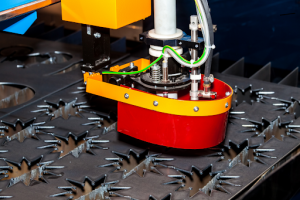
Materials to Avoid in Laser Cutting
Some materials are not only unsuitable but also dangerous to cut with lasers due to the emission of toxic fumes or the risk of fire. These include:
- PVC: Emits chlorine gas highly toxic and corrosive
- Polycarbonate (in thick sheets): Poor edge quality and potential fire risk
- Fiberglass: Contains glass fibers that can burn unevenly
- ABS: Emits cyanide-laced fumes and leaves rough edges
Key Considerations When Choosing a Material
Selecting the right material for your laser cutting project goes far beyond basic compatibility. It’s a strategic decision that affects everything from cut quality and production efficiency to cost control and long-term durability. Below are the most important factors industrial buyers should assess before committing to a material:
End Use and Functionality
Begin by defining the purpose of the part. Is it a functional component, a decorative element, or a prototype?
- For load-bearing or structural parts, materials like mild steel or aluminum offer strength without sacrificing cut precision.
- For cosmetic applications, stainless steel or acrylic can deliver visually clean edges and finishes with minimal post-processing.
- For temporary or low-budget use cases, materials like MDF, cardboard, or paperboard are more appropriate.
Matching the material’s properties to the expected use ensures your part performs reliably under real-world conditions.
Material Thickness and Tolerance
Different materials behave differently as thickness increases:
- Thinner sheets (1–5mm) of most materials cut easily and cleanly.
- Thicker metals (10–25mm) require higher wattage lasers, slower feed rates, and may leave heat-affected zones or require additional finishing.
You’ll also want to check the tolerance levels for your part. If you’re aiming for tight tolerances (±0.1mm or less), materials like acrylic, stainless steel, or laser-grade plywood are better suited.
Laser Compatibility and Cut Quality
Not all materials respond to laser energy in the same way:
- Reflective metals like copper and brass may bounce back the laser beam, risking damage to equipment.
- Thermoplastics like ABS or polycarbonate may melt, burn, or emit toxic fumes.
Fibrous or resin-rich materials like MDF may char or produce inconsistent cuts.
Discuss with your laser cutting provider whether the material is best suited for CO₂ or fibre lasers, and whether it needs any special handling techniques (e.g., masking film to prevent discolouration).
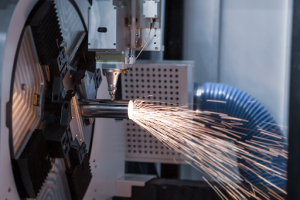
Aesthetic Requirements
If your part will be visible in the final product, visual quality matters:
- Laser cutting cast acrylic gives smooth, flame-polished edges ideal for signage and displays.
- Brushed stainless steel maintains a professional look with minimal surface blemishes.
- For parts that will be powder-coated or painted, minor surface marks from the cutting process may not matter as much.
Also consider colour consistency, surface grain, and edge darkness (especially for wood-based materials).
Production Volume and Scalability
If you plan to scale up production later, choose a material that:
- Is readily available in bulk
Offers consistent performance across batches - Can be cut efficiently at high speed with automation
For high-volume jobs, materials like laser-grade mild steel, aluminium sheets, or standardised plywood ensure reproducibility and availability.
Environmental and Safety Considerations
Some materials release hazardous fumes when cut, especially plastics with halogen additives (like PVC). Always check:
- Fume emissions and whether extraction systems can handle them
- Fire risk, especially for paper, foam, or textiles
- Worker safety around volatile or toxic materials
Working with a certified laser cutting facility ensures proper compliance with HSE and COSHH standards.
Cost and Lead Times
Finally, price and availability play a crucial role:
- Common materials like mild steel, aluminium, and acrylic are cost-effective and easy to source.
- Speciality metals or custom composite laminates can increase both cost and lead time.
- Consider the scrap rate; some materials generate more waste during cutting, affecting your per-part cost.
Always ask your laser cutter for material yield rates and whether they recommend alternative options that are more efficient or affordable.
Kirmell’s Expertise in Laser Cutting Across Materials
Whether you’re cutting thin acrylic sheets for signage or heavy-duty stainless steel for machinery, Kirmell Ltd offers industry-grade laser cutting services backed by modern technology and decades of experience. From prototyping to high-volume production, they ensure clean cuts, tight tolerances, and rapid turnaround.
Want expert help choosing the right material for your laser cutting needs? Contact Kirmell to get professional advice and precision results you can rely on.
Conclusion
Laser cutting offers an unmatched combination of precision, speed, and versatility, but only when the right material is used. Understanding which materials perform best under a laser, and why, helps industrial buyers make smarter decisions, avoid costly mistakes, and improve product outcomes.
By working with a trusted partner like Kirmell and selecting the appropriate materials for your application, you can ensure smooth, cost-effective, and high-quality production, no matter the size or complexity of your project.
FAQs
What is the best material for laser cutting?
Can all types of metal be laser cut?
Are plastics safe to laser cut?
How thick of a material can a laser cut?
How do I choose the right material for my laser cutting project?

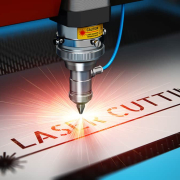
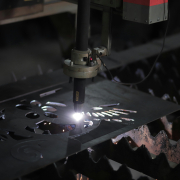
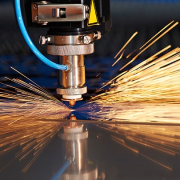
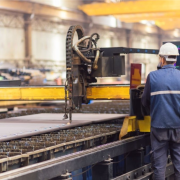
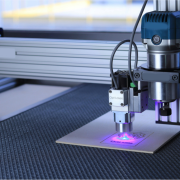
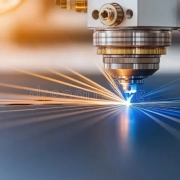
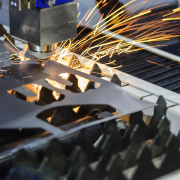
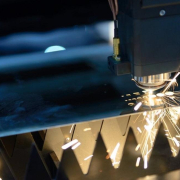



Leave a Reply
Want to join the discussion?Feel free to contribute!